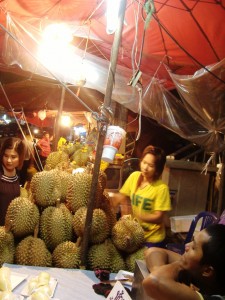- Potato fest at the Vavilov Institute next week. Report for us!
- Gary Nabhan on tortillas made of “mesquite pods, the flour of ground, popped amaranth seeds, wheat flour and olive oil.”
- EU to fund promotion of agricultural products, including information campaigns on the EU system of PDO, PGI, TSG, QWPSR et al. Via.
- Diversity good even within individuals.
- Engaging children in Sahelian agriculture and agrobiodiversity.
Agrobiodiversity fellowship available
The call for applications for the 2010 Vavilov-Frankel Fellowship is out. Good luck!
Nibbles: Climate change, Rice, Maize, PGR, Bananas
- Dept. of Silver Linings: “U.S. farmers and foresters could earn more money from carbon contracts than they pay in higher costs from legislation to control greenhouse gases.”
- Dept. of Black Clouds: “Climate change and the risk of violent conflict in the Middle East.”
- Rapid-growing rice reduces famine in Bangladesh.
- Yields of maize grown in rotation are higher and more stable than those grown exclusively.
- Latest Plant Genetic Resources newsletter online. Most accessible here.
- Banana scientist bags award for field genebank.
Fire and crop wild relatives
As wildfires rage across much of southern Europe, causing death and destruction, it’s sometimes difficult to remember — and perhaps insensitive to mention — that this is in fact a common occurrence, even necessary for the maintenance of vegetation and biodiversity in the Mediterranean.
In the Mediterranean, as in the mediterraneoids, fire occurs where vegetation is flammable. Combustibility is not a misfortune but an adaptation: plants that burn do so because they are fire-adapted. They make fire-promoting resins and other chemicals, or they have structural adaptations, such as producing a loose, airy litter of dead leaves and twigs which dries out and burns. Their ecology involves catching fire from time to time and burning up competitors.
Still, one wonders whether this might be too much of a “good” thing, and whether we’re heading for even more with climate change. What will this mean for particular species, for example crop wild relatives? Do we know how many are fire-adapted? And do we know even for those that are so adapted whether beyond a certain frequency or intensity fire becomes a threat rather than a necessity?
Durian galore
Ah, to be in Bukit Gantang for the Festival Jom Makan Durian! Starts tomorrow. If you’re there, let us know.
